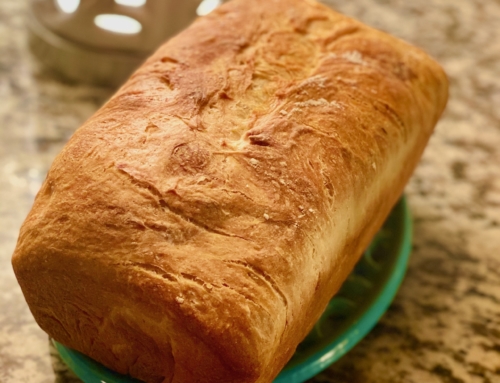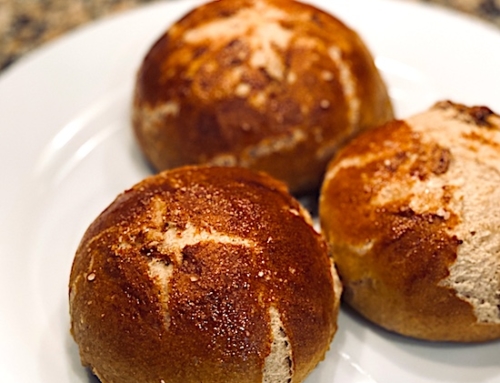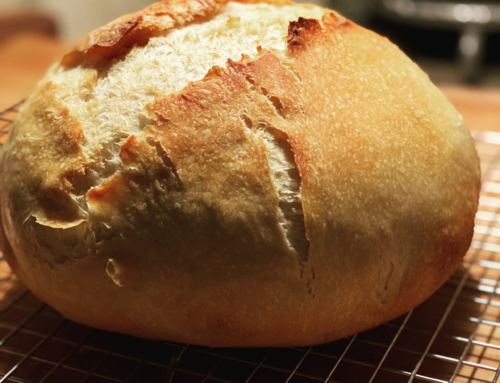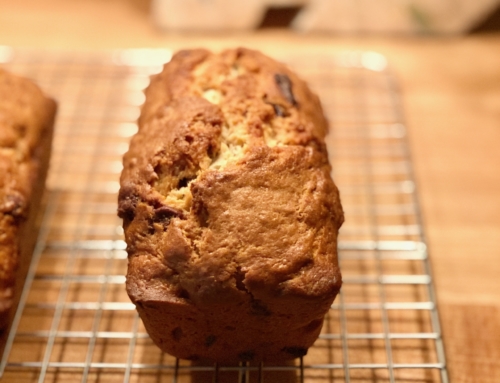The world of sourdough can be confusing. Below are some of the common questions and issues that arise when making sourdough starter and bread.
There are tons of variations out there for starters, baking temps, recipes, etc. Keep that in mind if you have read something somewhere else on the web. Try what feels right to you after you do the basics.

Sourdough Q&A
This post may contain affiliate links. We are proud to be an Amazon Affiliate. Please read my disclosure policy.
How long does it take for a sourdough starter to mature enough to begin baking?
Creating a sourdough starter from scratch can take anywhere from 7 days to 2 weeks depending on many factors.
These factors include the ambient yeast in the air, the temperature that the starter is kept at, the type of flour and water that is used, and the technique that is used.
Why isn’t my starter Rising after I feed it?
The rise of the starter has to do with the age of the starter, the yeast and bacteria in the starter, as well as the amount of fuel that is being fed to the starter.
More mature starters tend to react quickly (within 3 hours after being fed) because as they age the metabolic breakdown of new food after being fed is much more efficient.
If you have a relatively new starter, it may take a little while for it to become consistent after feeding. When I mentioned consistency after feeding what I mean is that you will have a predictable amount of rise within a predictable amount of time each time you feed your starter.
My starter’s rise slowly over a two to three hour window after being fed.
Other factors that can affect your starter are:
- Temperature– aim for 70°F to 80°F
- The type of flour you use will affect the amount of rise, too. Whole grains have more enzyme activity, thus, more rise. Try adding 1/3 whole wheat to your starter when you feed to see how it changes the rise.
What if I have a lot of bubbles but I don’t notice a rise with my starter?
Bubbles are good!
That means that your starter is eating and creating CO2.
If you have a young starter and you see bubbles but you aren’t noticing a rise, be patient.
Creating a healthy sourdough starter takes a little bit of time and honestly a little bit of luck.
It is very common for you starter to bubble the first couple of days then slow down.
Keep feeding and discarding. Remember — PATIENCE.
Sometimes you can double-feed your starter to see if the issue is lack of food. No matter what process you follow, your flour and your starter environment will be different. That can affect the rise and metabolism of new food once it is added to the starter.
If you are going to double-feed your starter, make sure that you have a container that is large enough for the added volume of food as well as the growth.
It can also be helpful to put a bowl underneath your starter jar after it’s second feeding just in case it overflows.
What is the clear liquid that I see sometimes at the top of my starter?
That liquid is called Hooch. Hooch Is basically the alcohol that has formed from the metabolism of the yeast in your starter. If you see the liquid on top what that means is that your starter has eaten all of its food and has turned the byproducts into alcohol.
Most of the time you will stir the hooch back into the starter. it creates a more sour taste to your sourdough. If you don’t want a strong sour taste and you see the liquid on top gently tilt your jar and pour the hooch off.
If you see Hooch often on your starter, that means that your starter is not getting enough food. you’ll want to increase your feeding amounts each time you feed.
What temperature should my starter be kept at after feeding?
You want to keep your starter somewhere warm with temperatures between 70°F and 80°F degrees.
If you have a cooler home, that just means it will take longer for your sourdough starter to get strong and it will take it longer to rise after a feeding.
To jump-start that growth, you can put your sourdough starter in your oven with your oven light on for a short period ff time after you feed it.
Before you do that you should know what temperature your oven will come to with the oven light on.
To test your oven temperature, before you put your starter in, turn your oven light on with the door closed and leave it like that for 1 hour.
At the one-hour mark, use your thermometer and test the temperature.
If the temperature is above 80° Fahrenheit then you’ll only want to turn your oven light on for a short period of time to create a small amount of ambient heat before you put your starter in.
Here’s an oven process for you:
- Before you begin to feed your starter, turn on the oven light and let it begin to warm the oven environment.
- After feeding your starter, put them in the oven with the light on.
- Set a timer to turn the light off after 45 minutes.
- Let your starter sit in the oven with the light off for an additional 2 hours.
It’s always a good idea to put a pan or bowl under your starter just in case it goes crazy and bubbles over.
What do I do with all of the discarded starter?
You can create a new starter with the discard. There are also several discard recipes that don’t require a ripe starter.
However, when your starter is young, within its first week, I recommend that you toss it if you’re not creating a second starter.
How can I get my sourdough to be more “sour”?
The sour flavor comes from a variety of things.
- How mature your starter is
- How long you let your dough rise — the longer the rise, the more flavor
- A refrigerated dough — cold fermentation — can create a more sour flavor because cold proofing creates more acetic acid. Stick your dough in the fridge or cold oven overnight to increase the flavor.
How should I store my sourdough bread?
Loosely covered for the first 2 days with a clean towel, or paper bag. Then for the next 3 to 7 in a sealed plastic bag.
NEVER refrigerate your bread — it sucks the life out of it.
You can freeze it for long term storage. Wrap tightly with plastic wrap then seal in a plastic bag. Will be good for up to 3 months this way. To bring back to life, just pop it in a 350°F oven for about 10 minutes.

You might need this…
Never miss a recipe or wine pairing. Get my latest recipes, wine tips, home hacks, and more.
*we never rent or share our list. we promise to
keep your info safe and will not spam you.*
Hey, I’m Lisa and I’m glad you stopped by. I love food and wine and making things that people love. Speaking of love, that’s my hubby with me in this photo. We were in one of the many tulip fields in Holland in 2018. Such beautiful colors and these fields stretched for miles and miles. Anyway, thanks for checking out the recipe. I’d love to hear how it goes when you make it so come back to the recipe and leave a comment and rating. Also, don’t forget to share your photo on Instagram and tag #vineandplate so I can brag about you 😉 …. Read More









Leave A Comment